A humidifier can be a great way to improve the air quality in your home and keep your skin from drying out during the winter months, but if you’re not careful it can also put your health at risk. One of the main problems with humidifiers is that they can create an ideal environment for mold to grow. Mold is a serious issue. It can cause health problems for people of all ages, and it can be especially dangerous for those with respiratory problems. If you have a humidifier in your home, it’s important to take steps to avoid mold growth. This article will discuss how to avoid mold in a humidifier and some tips on keeping your home healthy and free of allergens.
What is a Mold?
Mold is a type of fungi that can grow both indoors and outdoors. Mold spores are invisible to the naked eye and can be found in any environment, including your home. When mold spores land on a wet surface, they will begin to grow and multiply. Mold growth is often visible as fuzzy or slimy patches that can be black, white, green, or brown. Mold can cause health problems, such as allergic reactions, respiratory problems, and skin irritation.
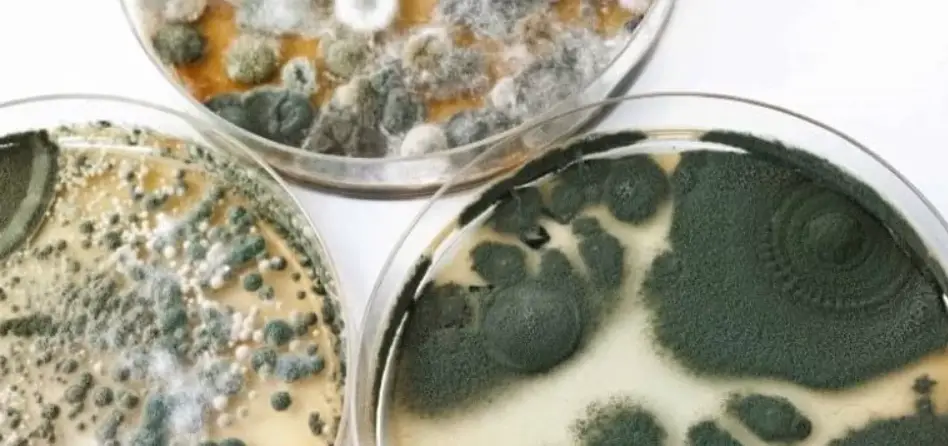
Mold can appear anywhere in your home, but is most likely to grow in humid environments, such as basements, bathrooms, kitchens, and laundry rooms. Mold can also grow on damp clothing, carpets, or furniture. If the mold appears in these areas, you may be able to see it, but it can also be hidden behind walls or under floors.
You should consider mold removal if you find mold in your home and it is causing health problems. You should also consider mold removal if the mold is affecting a large area of your home or if it is difficult to remove [1].
What Causes Mold in Humidifiers to Grow?
Mold loves two things: warm temperatures and moist environments. That’s why humidifiers can create the perfect environment for mold to grow, especially if they’re not cleaned regularly. There are two main types of humidifiers: those that use a wick to absorb water and release it into the air, and those that generate ultrasonic waves to create a mist. Both types can be breeding grounds for mold if they’re not cleaned properly.
How Do I Know If There is Mold in My Humidifier?
The short answer is: you might not know. Mold can be lurking in your humidifier without any telltale signs, and it can be tough to spot unless you’re looking for it. But there are a few things to watch out for that could indicate that mold has taken up residence in your humidifier:
- Discoloration of the water in the tank
- A musty or mildew smell coming from the humidifier
- Visible mold growth on any part of the humidifier
- If you notice any of these things, it’s time to take action to clean your humidifier and get rid of the mold. Keep reading for tips on how to do just that.
How Can I Prevent Mold from Growing in my Humidifier and Home?
If you use a humidifier in your home, it’s important to take steps to prevent mold growth. Mold can cause respiratory problems and other health issues, so it’s important to keep your humidifier clean and free of mold. Here are some tips to help you avoid mold in your humidifier and home.
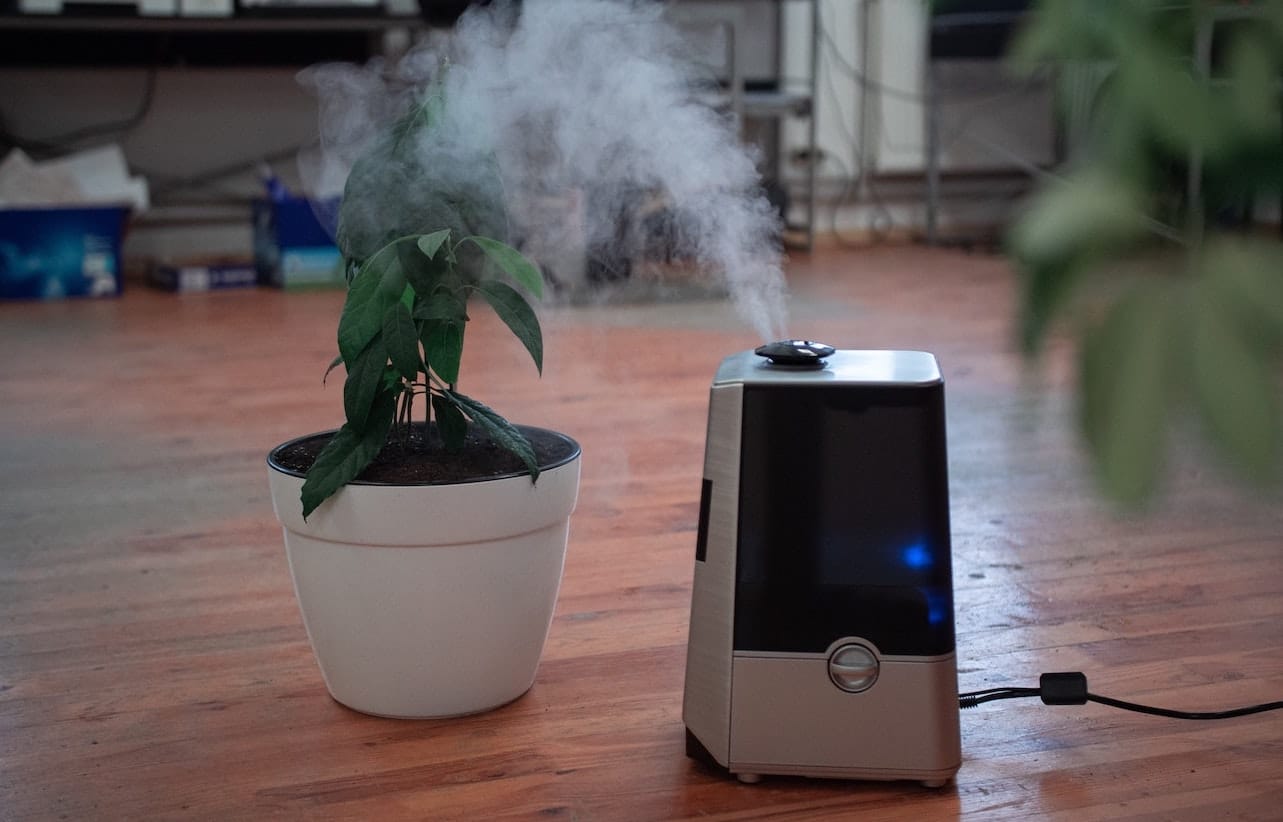
Use the Right Type of Water
One of the best ways to prevent mold growth in your humidifier is to use distilled water instead of tap water. Distilled water is free of minerals and contaminants that can cause mold to grow and spread. If you use tap water in your humidifier, be sure to clean it regularly to prevent mold growth. The tap water in your home may also contain contaminants and minerals that can encourage mold growth, so it’s important to use distilled water in your humidifier to avoid these problems.
Change the Water Often
Another way to prevent mold growth in your humidifier is to change the water frequently. If you don’t change the water regularly, mold and bacteria can build up and cause respiratory problems. Be sure to empty the water from your humidifier every day and refill it with fresh, distilled water.
Don’t Overfill the Tank
If you overfill the humidifier’s water tank, water can leak out and cause mold to grow. Be sure to fill the tank to the proper level and don’t overfill it. Usually, the tanks have a capacity line that you can use to gauge the proper level. The average tank capacity is about 1,3 – 1,8 gallons, but it’s always best to check your humidifier’s instructions to be sure.
Use a Hygrometer to Monitor Humidity Levels
Replace the Filters
All the humidifiers are equipped with special filters. These can be either disposable or reusable, depending on the model. The purpose of these filters is to remove impurities from the water and prevent them from being released into the air. If you don’t replace the filter regularly, it can become clogged with minerals and contaminants and cause mold to grow.
The type of filter and the frequency of replacement depend on the model of your humidifier. Most manufacturers use a wicking filter that needs to be replaced every few months. Some models also have an activated carbon filter that removes impurities from the water. These filters need to be replaced every few months as well.
Clean and Disinfect Your Unit regularly
Another way to prevent mold growth is to clean and disinfect your humidifier regularly. Most humidifiers have a built-in cleaning cycle that you can use to clean the unit. Be sure to follow the manufacturer’s instructions for how often to clean and disinfect your humidifier.
If your humidifier doesn’t have a built-in cleaning cycle, you can clean it manually. First, empty the water tank and remove the filter. Then, rinse the tank with distilled water and scrub it with a soft brush to remove any buildup. Next, fill the tank with a solution of equal parts distilled water and white vinegar and let it soak for 30 minutes. After 30 minutes, empty the tank and rinse it well with distilled water. Finally, replace the filter and refill the tank with fresh, distilled water [3].
Health problems that can be caused by mold
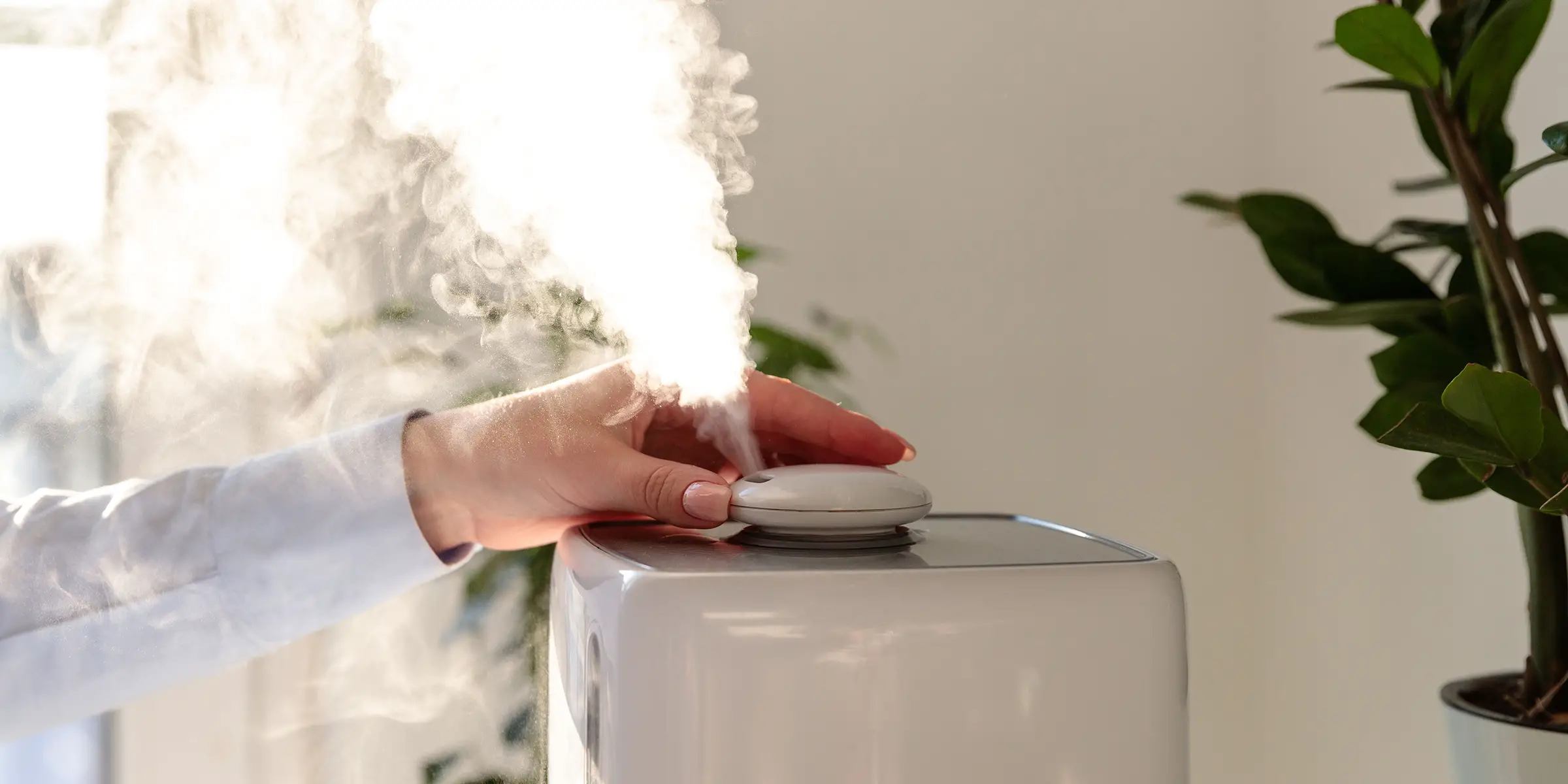
Mold is a type of fungus that can grow both indoors and outdoors, and thrives in damp, humid environments. When mold spores land on a wet or moist surface, they can begin to grow and multiply. Mold can cause a variety of health problems, including:
- Allergic reactions (such as sneezing, runny nose, red eyes, and skin rash)
- Asthma attacks: People with asthma or who are allergic to mold are at a higher risk for having more severe reactions to mold.
- Respiratory problems: Mold can cause inflammation of the airways and lungs, and can lead to difficulty breathing.
- Immune system suppression: Mold can cause the immune system to become suppressed, which can make it more difficult for the body to fight off infection.
- Toxicity: Some molds produce toxins that can cause a variety of health problems, including headaches, nausea, vomiting, diarrhea, and death [4].
- Keep your home dry: Make sure your home has proper ventilation and dehumidification systems in place to keep the humidity levels low.
- Clean up spills immediately: Clean up any spills or leaks as soon as they happen using a household cleaner and water.
- Repair leaks: Fix any leaks in your home, including plumbing leaks and leaks in the roof or foundation.
- Avoid carpeting: Carpeting can hold onto moisture and provide a place for mold to grow. If you must have carpeting, make sure it is made of materials that are resistant to mold growth.
- Inspect your home regularly: Check for signs of mold growth regularly, and take action to clean up any mold you find.
If you think you may have a mold problem in your home, it is important to take steps to address the issue as soon as possible. Mold can cause serious health problems, so it is important to get rid of it quickly. There are a variety of products available that can kill mold. These products are based on chlorine bleach, so they can be quite effective. However, they can also be dangerous if not used properly, so it is important to follow the instructions carefully. If you have a serious mold problem, it is best to hire a professional to do the job.
Right places for humidifiers in the house to prevent mold
Humidifiers are often thought of as a must-have appliance in winter when the air is drier and can cause respiratory problems. You should use and place these devices in the right places to prevent mold.
As you know, mold loves humid and warm environments. You should avoid using a humidifier in your bedroom unless the device has an automatic shut-off feature that will turn it off when the humidity level reaches a certain point. The kitchen and bathroom are also rooms where you should be careful about using a humidifier as these areas are generally more prone to mold growth. If you do use a humidifier in these rooms, make sure to keep an eye on the humidity levels and empty the tank regularly.
Types of humidifiers that are less likely to cause mold
There are different types of humidifiers with varying levels of technology. Some humidifiers are less likely to cause mold than others. For example, ultrasonic humidifiers operate by vibrating water at a high frequency to create a fine mist. This type of humidifier is less likely to cause mold because the water droplets are so small that they have a hard time clinging to surfaces. As long as you keep the filter clean and change the water regularly, an ultrasonic humidifier shouldn’t be a problem.
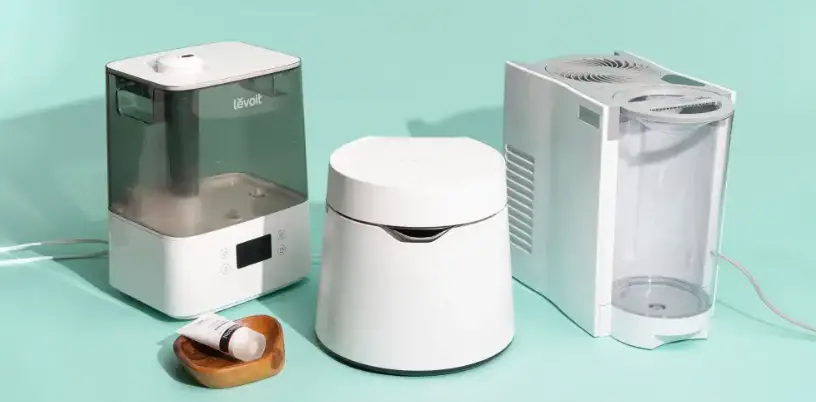
Another type of humidifier that is less likely to cause mold is a built-in humidifier. These devices are installed in the ductwork of your home and release humidity through the vents. Because the humidifier isn’t taking up space in your home, there is less opportunity for water to accumulate and mold to grow.
Comparison of Factors Affecting Mold Growth from Using a Humidifier
Using a humidifier can affect indoor humidity levels, potentially leading to mold growth. Below is a comparison of various factors that can influence mold growth when using a humidifier, helping you understand how to prevent mold-related issues.
| Factor | Description | Mold Growth Potential | Preventive Measures |
|---|---|---|---|
| Humidity Level | The relative humidity (RH) in the indoor environment, influenced by the humidifier’s settings. | Elevated humidity levels above 60% RH can create conditions conducive to mold growth. | Monitor and maintain indoor humidity levels between 30-50% RH to prevent excess moisture. |
| Cleanliness | The cleanliness of the humidifier unit, including the water tank, wick filter, and components. | Dirty or contaminated humidifier components can introduce mold spores into the air, promoting growth. | Regularly clean and disinfect the humidifier, replace filters, and use distilled or demineralized water. |
| Placement | Where the humidifier is located in the room and its proximity to walls, windows, or corners. | Humidifiers placed too close to surfaces can lead to localized moisture buildup and mold growth. | Position the humidifier away from walls and objects to allow for even humidity distribution. |
| Ventilation | The presence and effectiveness of ventilation systems in the room or area where the humidifier is used. | Poor ventilation can trap moisture, increasing the risk of mold growth, especially in closed spaces. | Ensure proper ventilation by opening windows, using exhaust fans, or employing air circulation devices. |
| Water Quality | The quality of water used in the humidifier, including mineral content and impurities. | Hard water with high mineral content can create mineral deposits and promote mold growth. | Use distilled or demineralized water to minimize mineral buildup in the humidifier and prevent mold-related issues. |
Explanation of the table:
- The table provides a comparison of various factors that can influence mold growth when using a humidifier, including humidity levels, cleanliness, placement, ventilation, and water quality.
- Each factor is described, highlighting its impact on mold growth potential and offering preventive measures to mitigate the risk of mold-related issues.
FAQ
Do all humidifiers grow mold?
No, but any humidifier can become a breeding ground for mold if it’s not cleaned properly. By choosing the right humidifier you should consider how often it will need to be cleaned, as well as what type of water you’ll be using.
Can I clean my humidifier with bleach?
Yes, bleach can be used to clean your humidifier. However, it’s important to follow the manufacturer’s instructions on how to properly clean and disinfect your unit.
How often should I clean my humidifier?
It depends on the type of humidifier you have, as well as the water you’re using. For example, if you have a central humidifier, you’ll need to change the filter every few months and clean the unit once a year. If you have an ultrasonic humidifier, you should clean it every week or two.
What can you put in a humidifier to prevent mold?
There are a few things you can do to prevent mold from growing in your humidifier, such as:
- Use distilled water instead of tap water
- Clean your humidifier regularly
- Empty and dry the unit after each use
- Keep the humidifier away from areas that are prone to mold growth, such as damp basements or bathrooms.
Does a humidifier make mold worse?
If your humidifier isn’t cleaned properly, it can make mold growth worse. This is because humidifiers add moisture to the air, which can create the perfect environment for mold to grow.
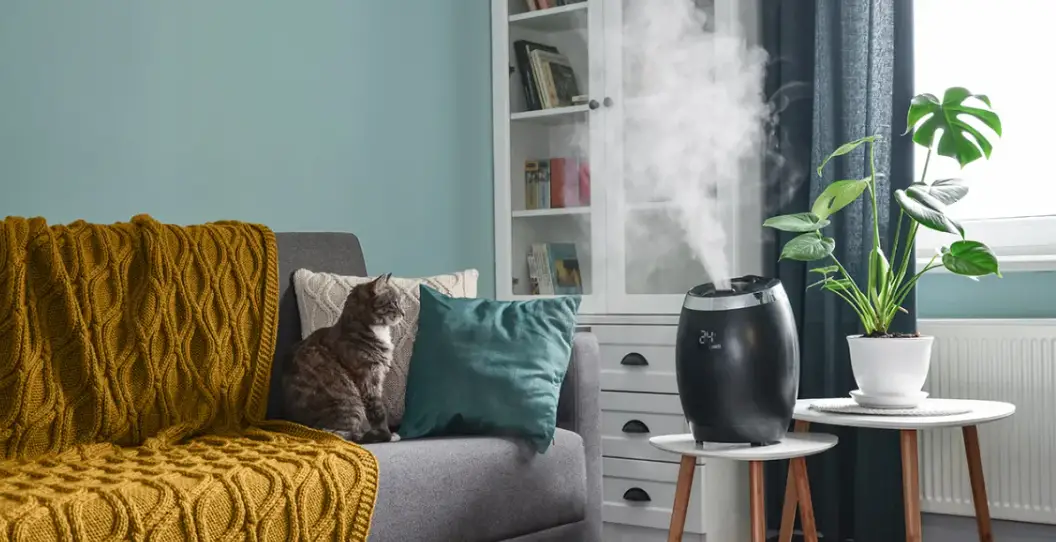
Can my humidifier make me sick?
If your humidifier is not cleaned properly, it can spread bacteria and viruses through the air, which can cause respiratory illnesses.
Should I get a humidifier?
That depends on your needs. If you live in an area with low humidity, a humidifier can help to prevent dry skin, static electricity, and nosebleeds. However, if you already have asthma or allergies, you should talk to your doctor before using a humidifier.
What are the symptoms of mold exposure?
Mold exposure can cause a variety of symptoms, such as:
- Coughing
- Wheezing
- Shortness of breath
- Watery eyes
- Itchy skin
- Runny nose
If you experience any of these symptoms, it’s important to see a doctor. Mold exposure can be especially dangerous for people with asthma or allergies. If you have either of these conditions, you should talk to your doctor before using a humidifier.
Is it OK to use tap water in a humidifier?
No, it’s not recommended to use tap water in a humidifier. This is because tap water can contain minerals that can build up in the unit and lead to mold growth. It’s best to use distilled water or water that has been filtered by a reverse osmosis system.
My humidifier doesn’t seem to be working. What could be wrong?
There are a few things that could be causing your humidifier to not work properly, such as:
- The unit isn’t turned on
- The humidistat is set too low
- The filter needs to be replaced
- Something is blocking the air outlet
- The unit isn’t filling with water
If you’re having trouble troubleshooting the problem, it’s best to consult the owner’s manual or contact the manufacturer.
Can you overuse a humidifier?
Yes, you can overuse a humidifier. If the humidity in your home gets too high, it can create the perfect environment for mold to grow. It can also make asthma and allergy symptoms worse.
What’s the best way to store a humidifier?
When storing a humidifier, it’s important to clean and dry the unit first. You should also empty any water that’s left in the tank. Store the humidifier in a cool, dry place out of direct sunlight. Avoid storing it in a damp basement or bathroom.
Can mold grow in a humidifier’s water tank?
Yes, mold can grow in a humidifier’s water tank if it is not properly cleaned and maintained. Stagnant water and moisture provide an ideal environment for mold to thrive.
How can I prevent mold from growing in my humidifier?
To prevent mold growth in your humidifier, regularly clean and disinfect the water tank and components. Use distilled water to reduce mineral buildup, and ensure the humidifier is thoroughly dried between uses.
Is it safe to use vinegar to clean my humidifier and prevent mold?
Yes, using a solution of white vinegar and water to clean your humidifier is an effective method to prevent mold. The mild acidity of vinegar helps inhibit mold growth and removes mineral deposits.
What are the health risks associated with mold in a humidifier?
Mold in a humidifier can release spores into the air, potentially causing respiratory issues, allergies, and other health problems. It’s important to maintain a clean humidifier to avoid these risks.
How often should I deep-clean my humidifier to prevent mold?
Deep-cleaning your humidifier should be done at least once a week to prevent mold growth. Regular maintenance, such as daily rinsing and changing the water, also helps in mold prevention.
Can using a humidifier with an antimicrobial filter help prevent mold?
Humidifiers with antimicrobial or demineralization filters can help inhibit mold growth by reducing the microbial content in the water. These filters need to be replaced or cleaned according to the manufacturer’s instructions.
Are there specific types of humidifiers less prone to mold growth?
Ultrasonic and evaporative humidifiers are generally less prone to mold growth compared to warm mist humidifiers, as they disperse moisture differently. However, proper maintenance is still crucial for all types of humidifiers.
What is the ideal humidity level to prevent mold in a room with a humidifier?
The ideal indoor humidity level to prevent mold growth is generally between 30% and 50%. Using a hygrometer to monitor humidity can help you adjust your humidifier accordingly.
Can using essential oils in my humidifier lead to mold growth?
Using essential oils in a humidifier can potentially promote mold growth if not done correctly. Make sure to clean the humidifier thoroughly and only use oils recommended for humidifiers.
How can I tell if my humidifier has mold, and what should I do if it does?
If you notice a musty odor, visible mold, or symptoms of mold exposure, such as respiratory issues, it’s important to stop using the humidifier immediately. Clean and disinfect it thoroughly to remove the mold, and consider replacing any contaminated parts.
Useful Video: Do Humidifiers Cause Mold? | Watch
Conclusion
If you have a humidifier, it’s important to take steps to prevent mold from growing in it. While most humidifiers come with some kind of filter, it’s not enough to eliminate the risk of mold growth. Use the tips above to help ensure that your humidifier doesn’t become a breeding ground for harmful mold spores. Be sure to clean your humidifier regularly, and if you notice any signs of mold growth, take action immediately to prevent the problem from getting worse. When it comes to your health, it’s better to be safe than sorry. With a little bit of care, you can enjoy the benefits of a humidifier without putting your health at risk.
References
- https://www.thehomehacksdiy.com/do-humidifiers-cause-mold-and-excessive-moisture/
- https://greenworksllc.com/mold-in-humidifier/
- https://www.aireserv.com/about/blog/2020/january/how-to-prevent-mold-in-humidifiers/
- https://www.epa.gov/mold/can-mold-cause-health-problems
- https://cielowigle.com/blog/where-to-put-humidifier/










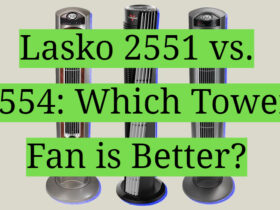



Leave a Reply